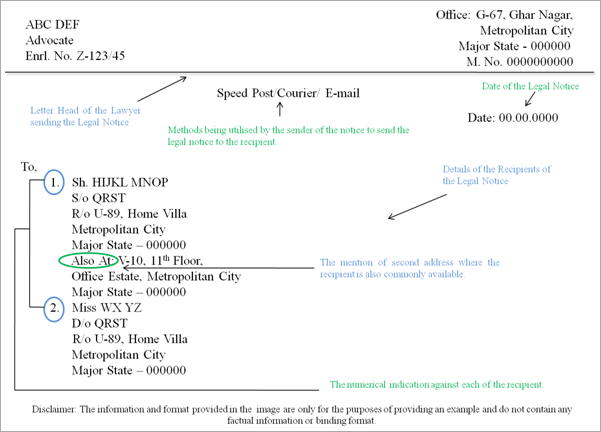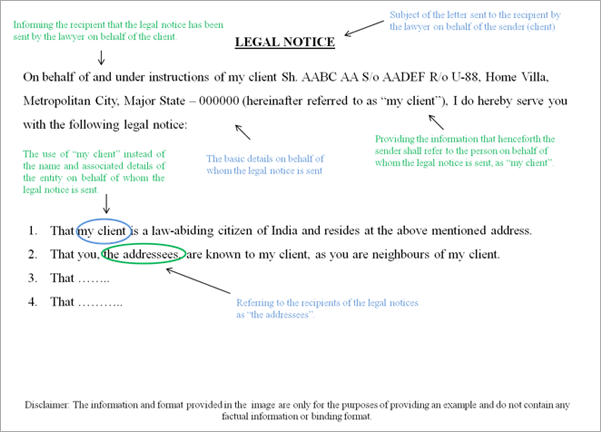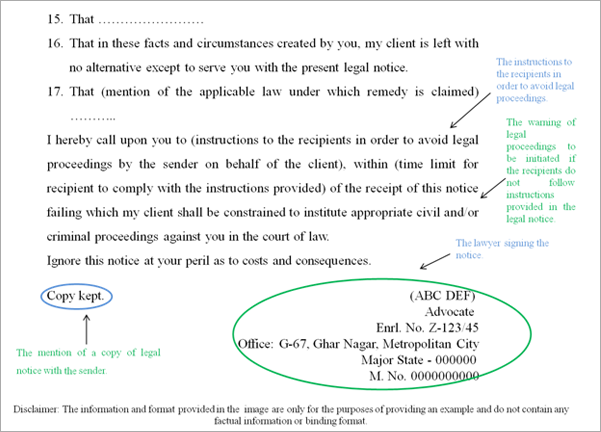“Legal notice” is a word we often hear thrown around a lot when talking about initiating proceedings.
We have often seen (or heard) in movies the dialogue being delivered, “I’ll sue you!”, “You’re going to hear from my lawyer” etc. It sounds cool and dashing, but what does it entail? Does a lawyer magically appear and take over for the person with regards to the incident? Do the entities concerned end up before the applicable dispute resolution authority the next minute? Next hour? Next day, perhaps? Well, depending upon the nature of the incident, police officials may also be involved. If not, it shall all begin with a notice - a legal notice.
A legal notice is the communication of an entity’s intention of undertaking lawful proceedings against the other following the damage caused to the sender of the legal notice by the recipient. Anyone can send a legal notice to another, whether in their individual capacity or through an authorised representative lawfully capable of doing so, with the help of a lawyer. It typically contains:
- The sender’s version of the events that led up to the incident.
- Details and description of the incident itself.
- The law, the sender relies on in order to claim remedy before the applicable dispute resolution authority.
- Allotment of time to the recipient to respond to the legal notice in the manner prescribed by the sender of the notice.
- The conveyance of intention of the sender to bring lawful action against the recipient.
The Start of the Notice - Details of the Parties
A legal notice is usually on the letter head of the lawyer sending the legal notice on behalf of their client. It then starts with modes used in order to send the legal notice at the centre of the page. Date of the legal notice comes next in the right hand corner. This is followed by the mention of the recipient(s) along with their name, their father’s/husband’s name, full address with pin code, and phone number and/or email ID if any. If there is more than one recipient, then, they are each named with numerical indication against their names. If there is more than one address where such recipient may be available on a regular basis, the second address is mentioned with “also at:” after the initial address.

The Body of the Notice
This is then followed by the subject of the letter, i.e. legal notice. Below that comes the paragraph with the full details of the sender of the legal notice, similar to the recipient’s details, i.e. their name, their parent’s/husband’s name, full address with pin code, and phone number and/or email ID if any. It also comes with the information, the person on behalf of whom the lawyer is sending the notice to the recipient, is being addressed as “my client” by the lawyer. This is followed by the body of the legal notice itself, which starts with introducing the sender, the recipient and the nature of their acquaintance. The description and details of the events leading upto the incident come next. Thereafter, the recipient(s) of the legal notice is referred to as “the addressee” or “the addressees” or “the addressee no.1” as per the number of recipients, wherein the number being used to refer to one of the recipients is the same of the number at which they were named at the beginning of the legal notice.

Concluding the Notice
Once the entire facts have been relayed, the notice then mentions the law basis which the sender claims remedy. It then also mentions the instructions the recipient may follow within the prescribed time limit, in order to avoid the warned legal proceedings. It then further warns the recipient, that upon expiry of the period allowed for the recipient to proceed as per instructions, and the instructions not having been complied with, the sender of the legal notice shall, upon the instructions of the client, initiate appropriate legal proceedings. This is followed by the mention that a copy of the legal notice is with the sender for future possible legal proceedings. The entire legal notice is then signed by the sender.

Conclusion
It is important to keep in mind with respect to legal notices that there is “no one type fits all” structure available. Each legal notice is as per the facts and circumstances of the cases and some are even time bound and have to comply with the time schedule as prescribed by the law. This only goes to show that in some scenarios the significance and importance of a legal notice is such that the required elements have been prescribed by the law to be complied with. Legal notices are the first step in the litigation process and are required for the purposes of law and also to provide an opportunity to settle the dispute without appearing before the authorities.